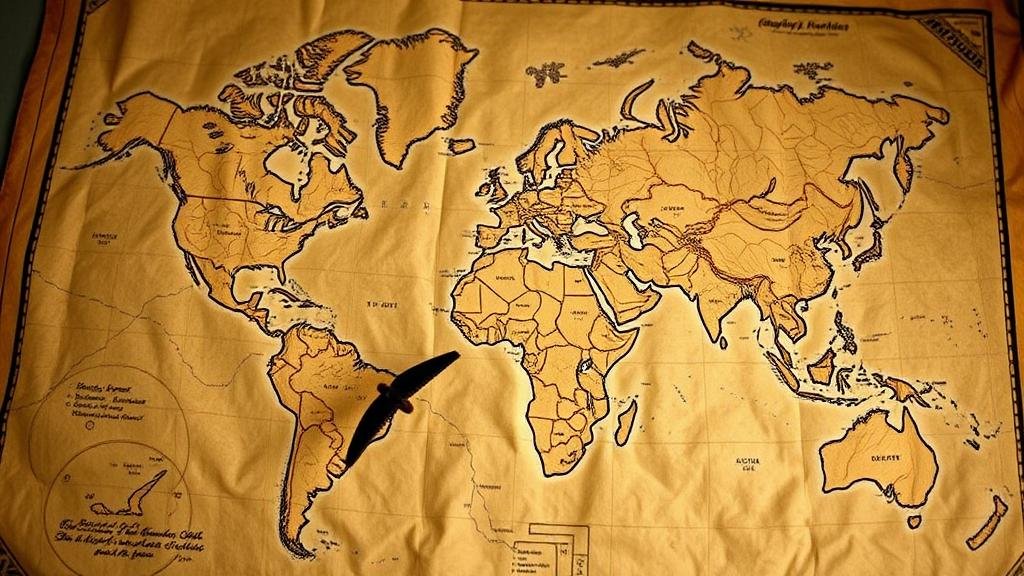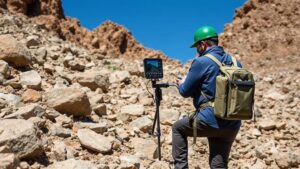Using Geographic Anomalies to Confirm Treasure Map Clues
Using Geographic Anomalies to Confirm Treasure Map Clues
The quest for hidden treasure has fascinated adventurers, historians, and the general public alike for centuries. At the heart of many treasure hunting endeavors lies a treasure map–an artifact often steeped in myth and legend. But, the reliability of these maps can be enhanced significantly through the analysis of geographic anomalies. This article will explore the methodologies, applications, and implications of utilizing geographic anomalies to confirm treasure map clues, providing both theoretical context and real-world examples.
Understanding Geographic Anomalies
Geographic anomalies are variations or irregular patterns in the terrain, climate, or ecosystem that diverge from the norm for a specific region. These anomalies can manifest in various forms, including:
- Topographical variations, such as hills, valleys, or cliffs
- Hydrological features like ponds, rivers, or springs
- Unusual vegetation growth or decay
These features can serve as critical indicators that corroborate or refute clues found on traditional treasure maps. For example, a treasure map might indicate a landmark near a “dry well.†If a topographical survey reveals anomalies such as altered river courses or evidence of shrubby growth where a well used to be, treasure hunters can reassess their strategy.
Case Study: The Oak Island Mystery
One of the most famous treasure hunts, the Oak Island mystery, offers a compelling example of how geographic anomalies can provide insights into treasure map clues. Since the late 18th century, numerous explorers have searched for treasure supposedly hidden on Oak Island, Nova Scotia. The original treasure map included clues that pointed to specific geographical features, including the Money Pit. Investigations revealed significant soil anomalies and unusual drainage patterns, indicating that prior excavation efforts may have disrupted natural water flows, potentially obscuring the treasures actual location.
Geologists and archeologists have utilized ground-penetrating radar (GPR) to identify subsurface anomalies that correlate with the clues on the treasure map. In this case, the geographic anomalies informed researchers about the human activity onsite and altered the search approach. Instead of relying solely on traditional digs, they incorporated GPR findings to identify less intrusive methods of exploring the treasure site.
Methodologies for Anomaly Detection
Several methods can be employed to detect geographic anomalies that may assist in confirming treasure map clues:
- Remote Sensing: Utilizing satellite imagery and aerial photography to observe features from above that are not visible on the ground.
- GIS Mapping: Geographic Information Systems (GIS) can be used to overlay treasure maps on modern maps, allowing for the analysis of topographical features against historical maps.
- Field Surveys: Conducting on-site investigations to physically verify clues and document any anomalies that may not be apparent from maps.
These methodologies can yield significant data, allowing treasure hunters to build a more nuanced understanding of the landscape they are exploring. For example, by using GIS mapping, one can identify anomalies in land use that might correspond to historic landmarks or disturbances mentioned in treasure lore.
Real-World Applications of Geographic Anomalies
The use of geographic anomalies is not limited to historical treasure hunts. Modern treasure hunting has seen similar applications in various fields, including:
- Archaeology: Anomalies in soil composition can indicate ancient structures or burial sites.
- Mining: Understanding geological anomalies can lead to the discovery of mineral deposits.
- Environmental Studies: Geographic anomalies can alert researchers to changes in climate or ecosystem health.
For example, in archaeology, teams have utilized GPR to detect anomalies that suggest the presence of previously unknown ruins in areas known for historical significance. This approach has not only led to significant discoveries but has also spoken to the importance of assessing landscapes holistically.
Potential Challenges and Considerations
While the analysis of geographic anomalies offers great potential, several challenges must be considered:
- Accuracy of Data: The reliability of geographic data can be variable. It is crucial to cross-check findings with ground truthing.
- Environmental Factors: Changes in weather and landscape over time can obscure or alter geographic anomalies, complicating the confirmation process.
- Legal and Ethical Issues: Treasure hunting can raise significant legal questions regarding ownership of artifacts and site excavation permissions.
Addressing these challenges often requires a multidisciplinary approach, involving collaboration among treasure hunters, historians, geologists, and legal experts.
Conclusion and Actionable Takeaways
Using geographic anomalies to confirm clues found on treasure maps is an evolving field that combines science with the intrigue of adventure. By leveraging modern technology and methodologies, treasure seekers can enhance their investigative efforts and aspirations. journey is as vital as the treasure itself; thoroughness in evaluation, research, and interdisciplinary collaboration will often lead to more fruitful discoveries.
As you embark on a treasure hunt, consider the following actionable takeaways:
- Use GIS mapping to overlay historical maps with current landscape data for a comprehensive analysis.
- Conduct field surveys to detect real-time geographic anomalies versus those noted in historical data.
- Collaborate with experts from various fields to equate findings with historical context and technological insights.
Ultimately, the treasures of knowledge and discovery may prove to be as valuable as the gold and jewels sought by many-a-treasure hunter.



